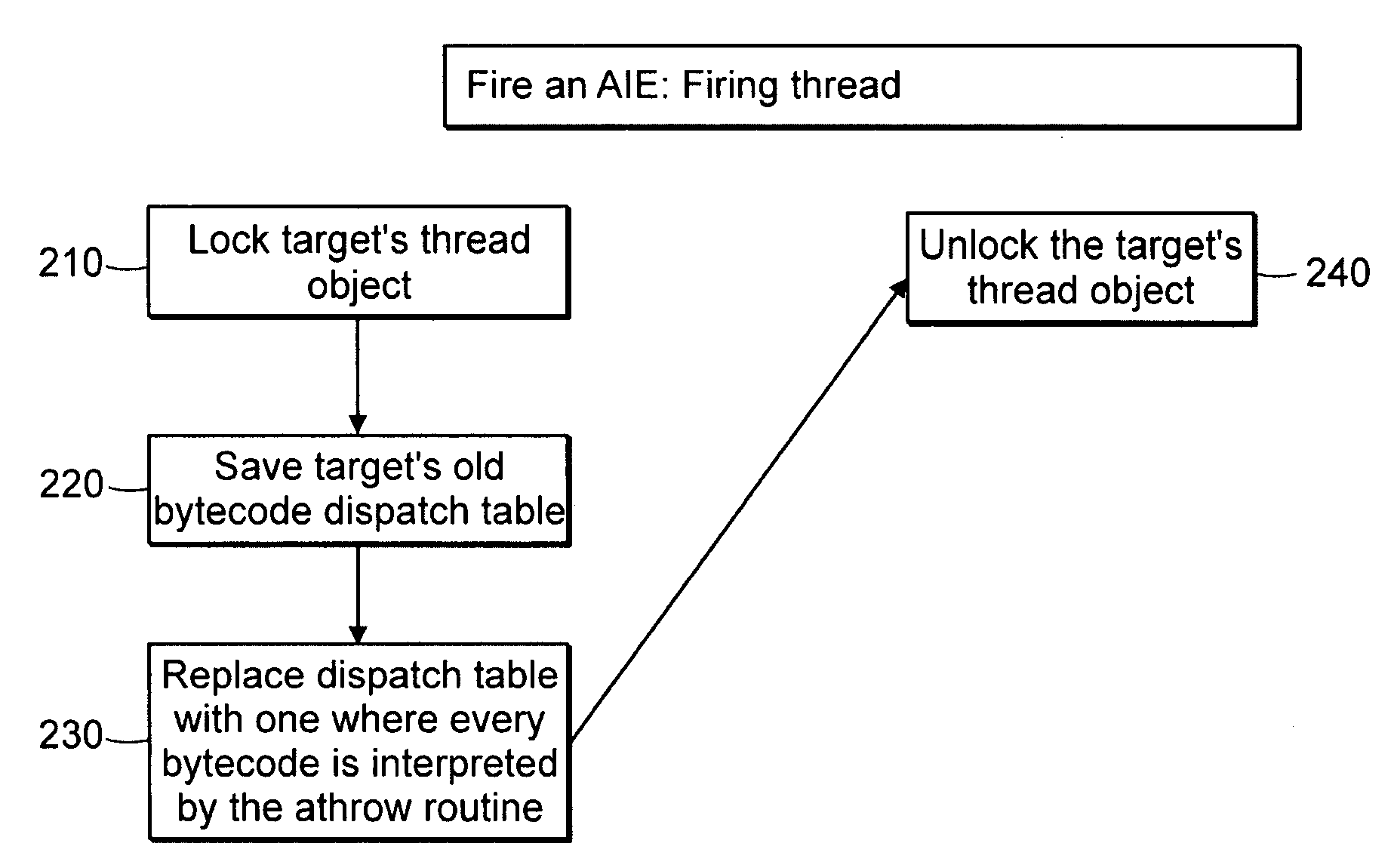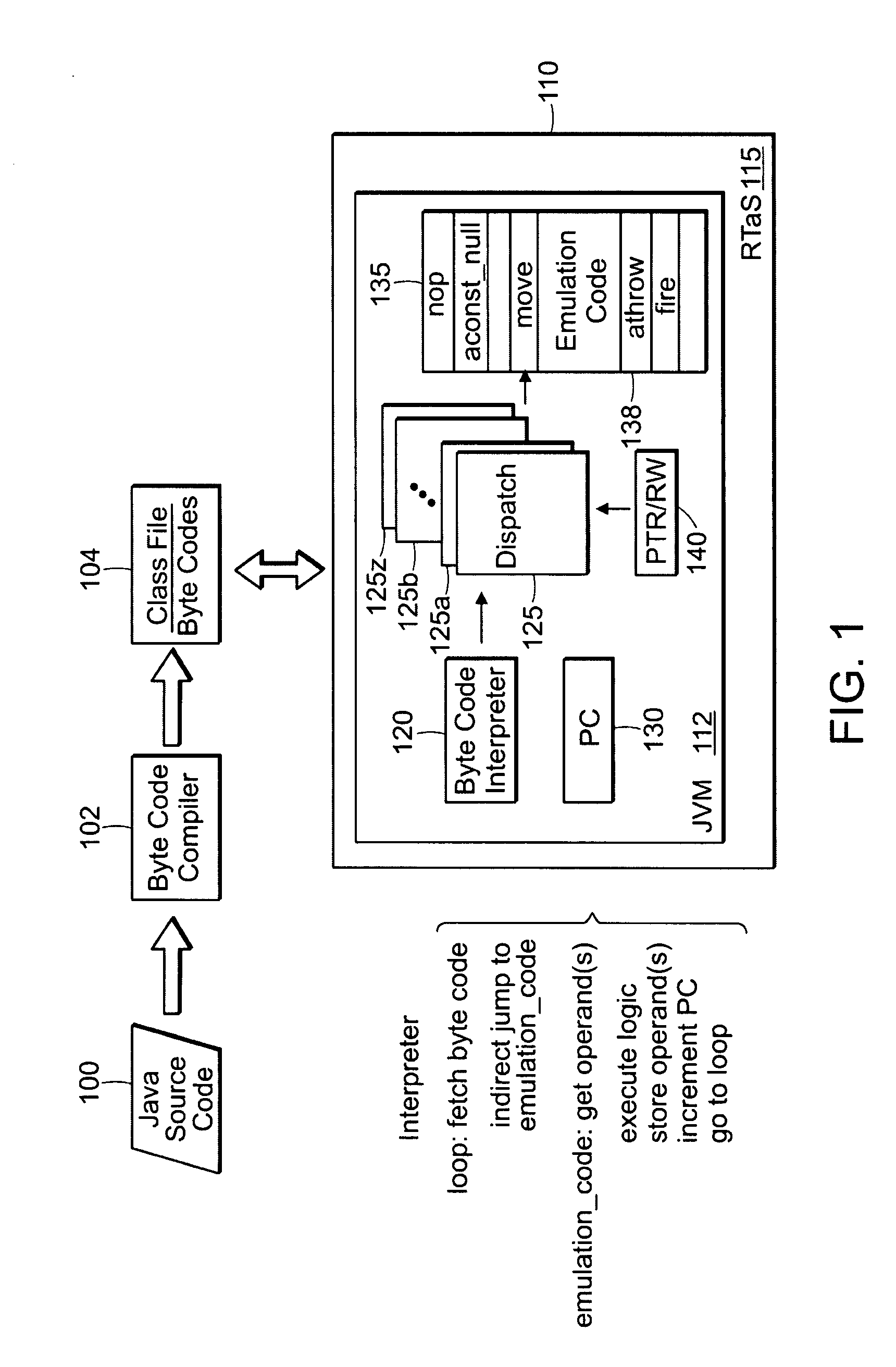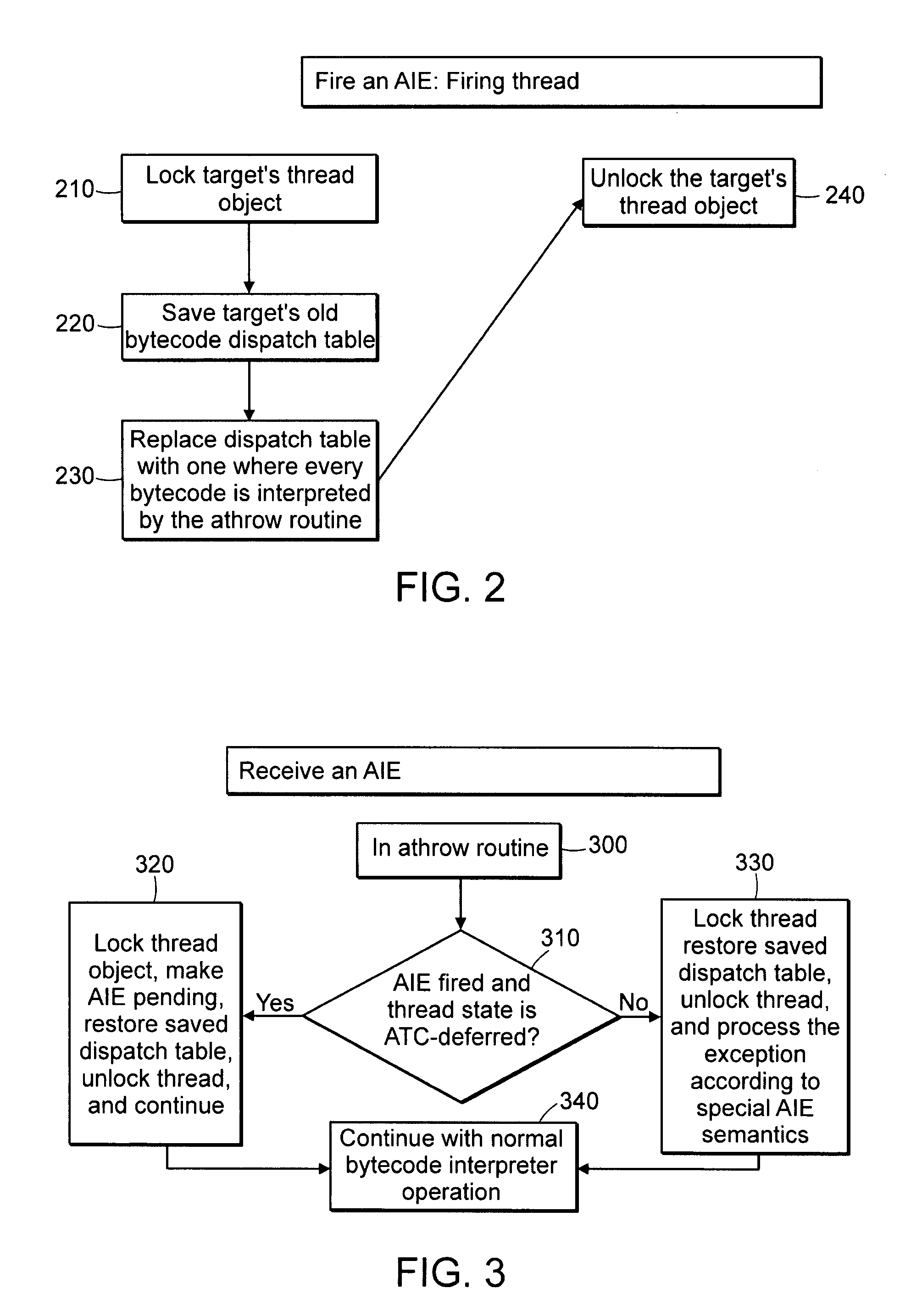Techniques for exception handling by rewriting dispatch table elements
a dispatch table and exception handling technology, applied in the field of techniques for, can solve the problem of interpreter executing a little more slowly, and achieve the effect of reducing the cost of executing code and substituting conveniently and efficiently
- Summary
- Abstract
- Description
- Claims
- Application Information
AI Technical Summary
Benefits of technology
Problems solved by technology
Method used
Image
Examples
Embodiment Construction
Terminology Used in This Document:
[0030]
AI:Asynchronously interruptible; a regionof code that is susceptible to ATC.AI-deferred:A lexical region of code in which ATCis deferred, namely, methods that donot declare AIE in their ‘throws’ clauseand regions within a synchronizedstatementAIE: classAsynchronouslyInterruptedExceptionATC:Asynchronous Transfer of ControlATC-deferred:see AI-deferred.Athrow bytecodeThe JVM bytecode that causes theJVM to execute the transfer of controlcaused by throwing an exception.athrow labels array:The static array of pointers to the labelfor the athrow bytecode. Of the samesize and type as the bytecode array.Every element points to the sameopcode label, athrow.bytecode array:The static array of pointers to labelsused when the JVM is compiled withthat option.Bytecode PCThe bytecode interpreter's indicationof the next bytecode to execute for agiven thread.dispatch tableIndirect jump table used by bytecodeinterpreter to locate emulation code foreach bytecodeee...
PUM
 Login to View More
Login to View More Abstract
Description
Claims
Application Information
 Login to View More
Login to View More - R&D
- Intellectual Property
- Life Sciences
- Materials
- Tech Scout
- Unparalleled Data Quality
- Higher Quality Content
- 60% Fewer Hallucinations
Browse by: Latest US Patents, China's latest patents, Technical Efficacy Thesaurus, Application Domain, Technology Topic, Popular Technical Reports.
© 2025 PatSnap. All rights reserved.Legal|Privacy policy|Modern Slavery Act Transparency Statement|Sitemap|About US| Contact US: help@patsnap.com



